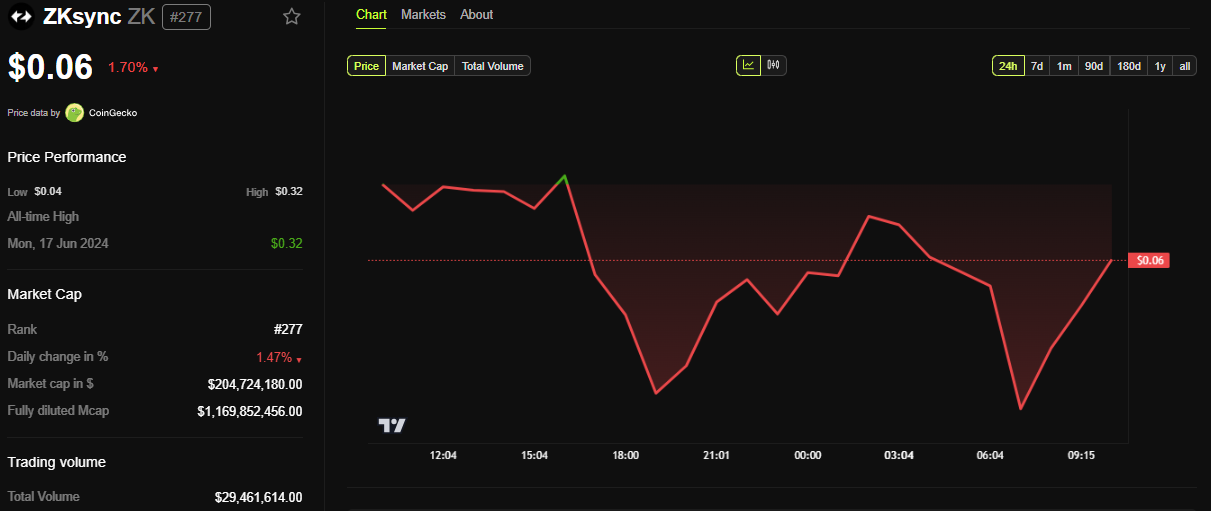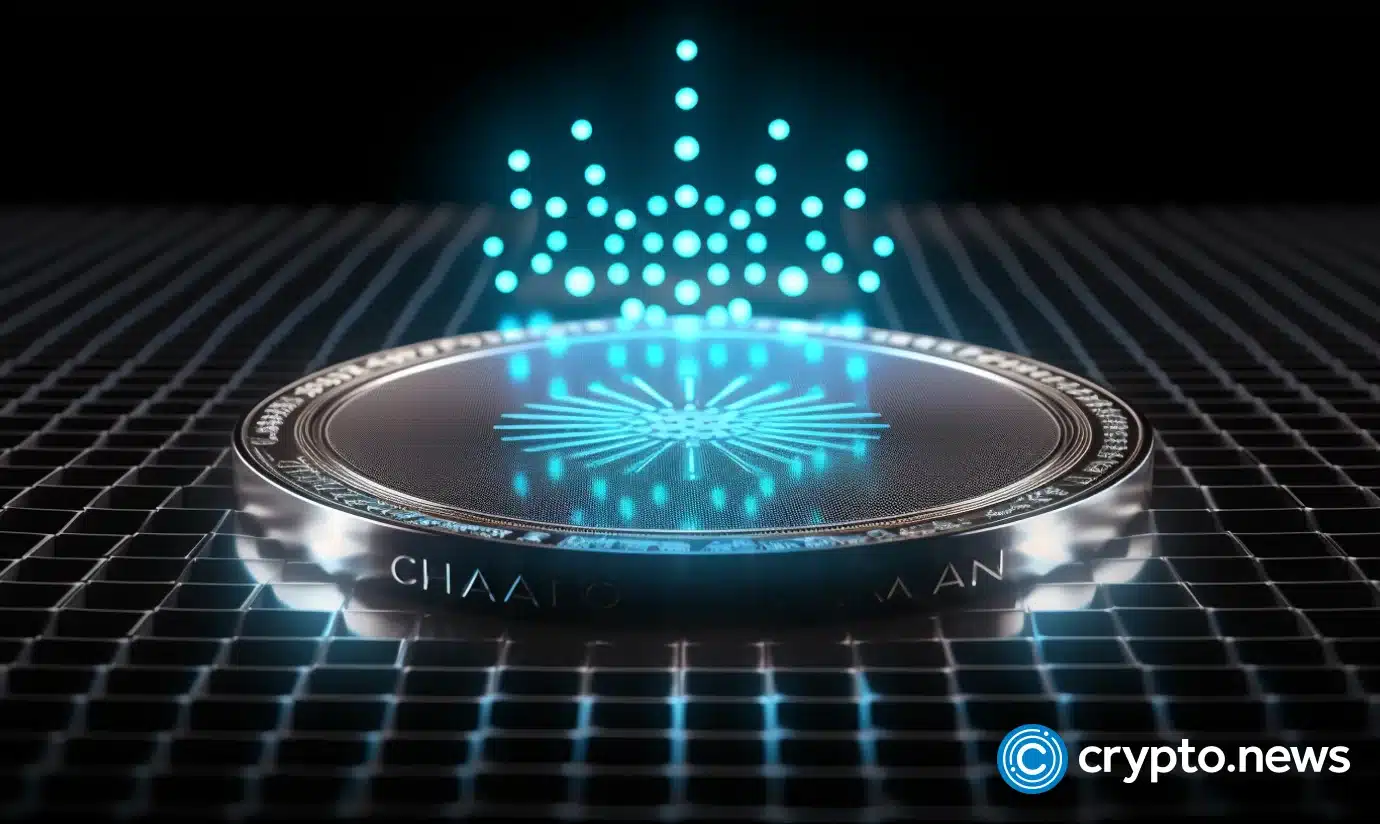ZKSync Hacker Returns $5.7 Million Amid Ongoing Bearish Sentiment Surrounding ZK Token
In a surprising turn of events, the ZKsync hacker returned approximately $5.7 million in stolen funds after agreeing to a 10% bounty offered by the ZKsync Security Council. While this recovery marks a notable victory for the ZKsync community, the native token, ZK, has not benefited, exhibiting con

-
In a surprising turn of events, the ZKsync hacker returned approximately $5.7 million in stolen funds after agreeing to a 10% bounty offered by the ZKsync Security Council.
-
While this recovery marks a notable victory for the ZKsync community, the native token, ZK, has not benefited, exhibiting continued bearish market sentiment with a nearly 2% price decline.
-
The hacker’s decision to return the bulk of the funds echoes past resolutions in the cryptocurrency space, reminiscent of the Ronin Bridge hack cases.
This article explores the recent hacking incident with ZKsync, the return of stolen funds, and the implications for the ZK token’s market performance.
ZKSync Hacker Returns $5.7 Million
On April 15, the Ethereum-based Layer-2 scaling solution ZKsync faced a significant security breach, leading to the compromise of an account controlling upwards of $5 million in ZK tokens. As reported by COINOTAG, this incident triggered a sharp 16% decline in the token’s market price.
The situation escalated further when community members raised concerns about the ZKsync team’s actions post-hack. Allegations suggested that ZKsync might have mismanaged the aftermath similar to what was seen with Mantra (OM), which heightened worries about the project’s stability.
“The ZKsync team has released 110 million tokens and sold 66 million. The price of ZK is moving against the market recovery trend, dropping 15% immediately thereafter,” lamented an outspoken user, highlighting the community’s growing unease.
In a significant development, however, the ZKsync Association confirmed that the hacker returned 90% of the stolen assets, effectively meeting the safe harbor deadline offered during negotiations to resolve the security incident.
“We’re pleased to share that the hacker has cooperated and returned the funds,” read a post from the ZKsync Security Council, confirming the resolution of the case. “The assets are now in the custody of the Security Council for further evaluation,” they added.
On April 21, the ZKsync Security Council publicly extended a conditional offer—a 10% bounty—to the hacker to encourage the return of the stolen funds within a 72-hour timeframe, which they eventually accepted.
As a result, the hacker proceeded to transfer nearly $5.7 million back, completing three transactions on April 23. Two transfers were initiated on the ZKsync Era blockchain, with the first involving $1.83 million in Ethereum (ETH) sent to the ZKsync Security Council’s designated address and a second transferring $2.47 million in ZKsync tokens.

The third transaction saw the hacker send 776 ETH, approximately worth $1.4 million, to the ZKsync Security Council’s Ethereum address.

Moving forward, the ZKsync Association is tasked with releasing a comprehensive report detailing the hacking event and the subsequent recovery. Importantly, the hacker followed all instructions provided by the Security Council, resulting in the closure of the case without further actions taken.
This incident draws parallels to others in the crypto space, like the Ronin Bridge hack, where hackers returned stolen funds for a bounty, demonstrating a potential shift towards cooperative resolutions in the industry.
Despite the positive outcome regarding the return of funds, the ZK token seems unfazed, experiencing a decline of nearly 2% over the past 24 hours, and currently trading at $0.06.

Notably, not all hacking incidents respond to bounty offers positively. For instance, Bybit recently instituted a bounty program aimed at recovering $1.4 billion in stolen assets, where only partial recoveries have occurred due to various constraints.
In contrasting scenarios, other blockchain ecosystems implement proactive measures using bounty programs to enhance security. For example, Cardano’s Charles Hoskinson proposed a $1 million bounty aimed at testing the new Lace Paper Wallet’s security, while Uniswap recently offered a record-breaking $15.5 million bug bounty targeting vulnerabilities in its v4 core contracts.
Conclusion
In conclusion, while the return of the stolen funds displays a significant win for ZKsync and its community, the bearish sentiment surrounding the ZK token indicates underlying challenges. The hacking incident underscores the ongoing need for robust security measures and the potential effectiveness of incentive-based recovery strategies in the cryptocurrency sector. As the market continues to evolve, stakeholders will be keenly observing how these developments influence both governance and token performance.
Don't forget to enable notifications for our Twitter account and Telegram channel to stay informed about the latest cryptocurrency news.
Delegate Your Voting Power to FEED DRep in Cardano Governance.
DRep ID: drep12ukt4ctzmtf6l5rj76cddgf3dvuy0lfz7uky08jfvgr9ugaapz4 | We are driven to register as a DRep by our deep dedication to the Cardano ecosystem and our aspiration to take an active role in its development, ensuring that its progress stays true to the principles of decentralization, security, and community empowerment.DELEGATE VOTING POWER!






